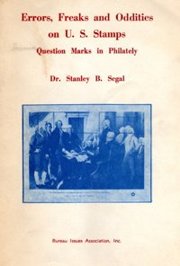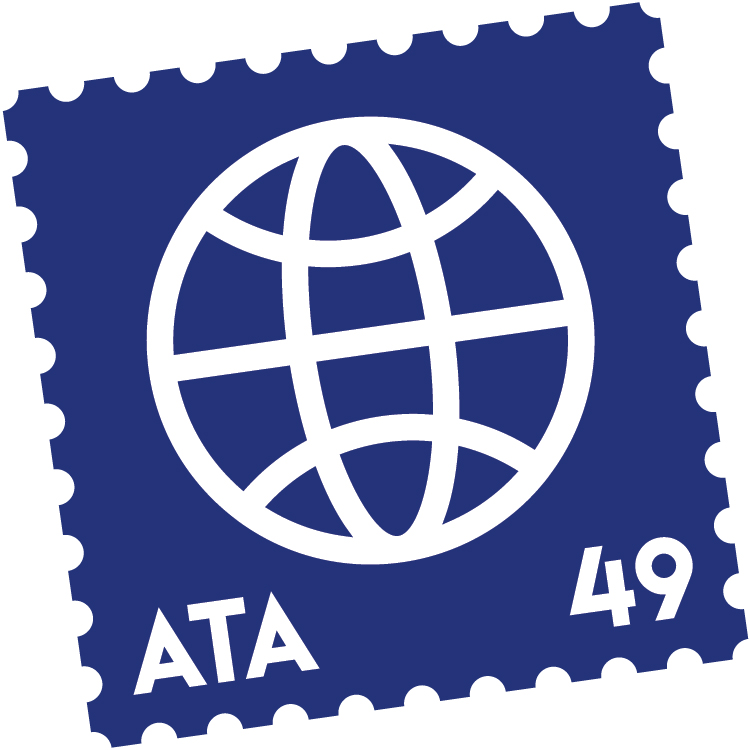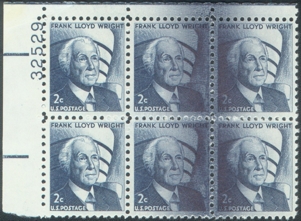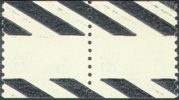
EFOCC Home
Resources
The EFO
Collector
Collector
Auction
Honor Roll
EFOCC History
Club Business
Membership
Buyers/Sellers
Service Providers
Service Providers
Member Login

EFOS for Sale
 |
| APS Affiliate #103 |
 |
 |
| ATA Chapter #94 |
| Click here for a printer friendly version of this essay. |
50. Rejection markings: The identification of flawed material that is to be rejected ranges from hand-placed markings in earlier days to automated markings developed in modern times for specific processes. Most earlier material was marked for rejection by red grease pencil, which gave way to black markers. In the 1950s and 1960s, a black spray was often used, and some coils were actually slit in the center to mark them for destruction. Except for the Presidential-era definitives double paper, all material marked for rejection is scarce. It tends to be underpriced because it's not a popular collecting area and collectors often don't know what it is when they see it.

Type 50: A spray rejection marking is shown on the 2¢ Wright (Scott 1280).


Type 50: The purple and black printed marks on the back of the coil pair (Scott 1895) are rejection markings.

Type 50: The rejection markings on this E-rate stamp (Scott 2277) were hand-applied with a magic marker.
| Previous: Bureau or other printer repairs and splices | Rejection markings | Next: Slime holes |
| Table of Contents | Freaks |
John M. Hotchner
Errors, Freaks & Oddities
The EFO Collector
The Archives
John M. Hotchner
EFO Corner
The Columns
from Linn's
from Linn's
Articles By
Wayne Youngblood
AG
Files
Ryskamp
on
Computer-Vended Postage
Not
quite
EFOs